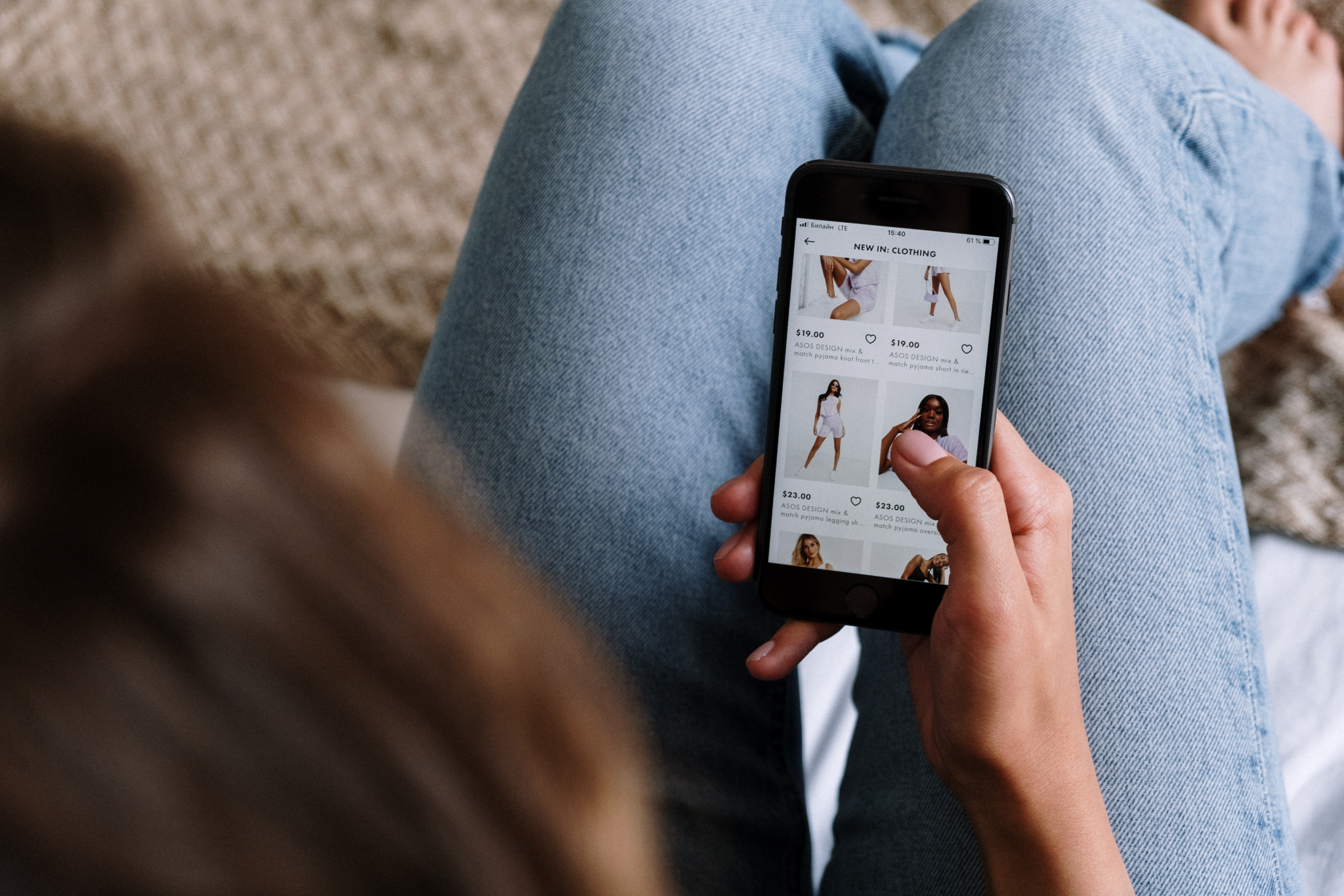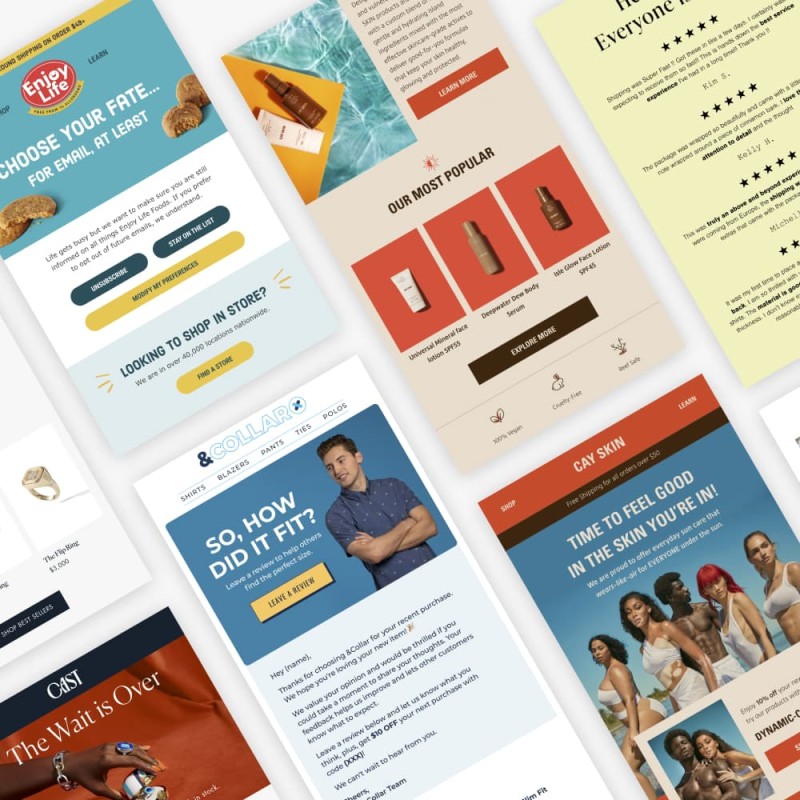Getting Started with eCommerce Personalization Strategies

Quick Summary You've probably heard of eCommerce personalization, but if you're like many companies, your eyes may glaze over at the mention of yet one more marketing buzzword. If that's the case, you may be missing out on an opportunity to garner greater customer interest in your brand and develop a customizable marketing strategy that will turn into increased sales and stronger customer loyalty.
eCommerce personalization refers to the strategy of creating specific and unique experiences for customers by providing tailored content and products based on their shopping behaviors, traffic sources, affinities, and other various factors. Common personalization strategies include completely personalized product recommendations, emails, and SMS marketing efforts. The customer personalization data comes from a consumer's site browsing history, activity, and behavior, as well as other similar sources.
Why should your company make the effort to incorporate eCommerce personalization into your business? There are quite a few reasons. The biggest goal of using this strategy is to increase conversion rates. After all, customers have reported time and time again that personalized content leads them to be more likely to make a purchase and become loyal customers of a brand. At its core, personalized eCommerce is all about elevating the customer experience.
After you’ve made the decision that personalization is the right move for your brand, you must implement practices that ensure lasting results. Fortunately, there are plenty of effective techniques to try and tools to help you on this journey. With just a little research and preparation, your site's conversion rates can reach new heights.
Why incorporate personalization?
The benefits of personalized eCommerce go far beyond boosting the number of sales your business makes. In fact, many of the advantages are completely customer-driven, an important factor in achieving eCommerce success:
Know your customers in and out: By utilizing a CRO platform to run your personalization campaigns, you will gather invaluable customer data, including customer's locations, likes, website activity, and other behaviors that can identify optimal products and content to display.
Use a variety of interesting strategies: You can elevate the customer experience by trying out various types of personalization strategies. You can experiment with different personalized techniques on multiple site pages, through various marketing channels, or even on social media platforms, increasing the probability of sales.
Grow customer loyalty: An American Express study found that 80% of customers will grow their loyalty to a brand over time, thanks in particular to excellent customer service and an outstanding user experience. Loyal customers are not only more likely to make purchases, but they are also more likely to recommend a brand to friends and family.
Get a higher ROI from CRO: Of course, getting a high ROI is important for your company's marketing budget. Using personalization as an eCommerce CRO (conversion rate optimization) tactic can greatly increase your ROI - up to 223%. Your investment in your consumers can be quite financially rewarding.
Stand out from the crowd: While many businesses are trying their hand at personalization, they are still trying to figure out what it means and how it serves them rather than their customers. You can stand out from the competition by curating a customer-centric website experience that's guaranteed to catch your customer's attention.
Choosing how to start your eCommerce personalization journey comes down to understanding which strategies work best for you.
How to start
Picking a personalization strategy depends on your business targets and goals. Of course, you can also experiment with one or more methods to find out which works best over time.
A/B test your site
A/B testing, also called split testing, works best for determining whether the personalization strategies you are implementing are actually driving conversions. A/B testing involves experimenting with two versions of a personalization strategy, to see which one works better. You can use this testing strategy to compare just about anything when it comes to marketing, including call-to-action buttons, pop-ups, email copy, or images on a website. With certain CRO platforms, we can even A/B test product recommendation strategies against each other.
For instance, perhaps you include a sign-up form on your homepage to encourage customers to register for emails from your brand. You can test multiple options for where the sign-up form appears on the page to see which location gets greater engagement. Version "a" of your site might have the form appear in the center of your page, while version "b" will show a sign-up form in the bottom right corner. You can test both versions to see which customers engage with more, and then use the data to decide on a final and best position.
Survey customers prior to purchase
One of the most personalized experiences you can offer interested customers is a survey tailored to meet their needs. Many companies choose to include the survey directly on their landing page.
Beauty and skincare websites can do this by asking customers a few key questions about their beauty or skincare routines. After a customer responds to these questions, they can receive a list of recommended products that target the exact issues they're trying to address. By collecting this data, the company now also has information that they can use to further engage with the customer, including by sending follow-up emails or offering relevant discounts.
Ask for reviews
Customer reviews can greatly influence potential consumers as they decide whether to make a purchase...but what about customers who already made a purchase? Will they be more inclined to become repeat customers if they give you a review? If you incorporate personalized inquiries when asking for a review, the probability certainly rises. Customized reviews can help you better understand a customer's experience and interaction with your site, leading to more comprehensive curations of your website and marketing to the customer themselves.
Make use of on-site browsing history
Understanding your customers' browsing behaviors on your site can create a completely unique website experience. Most CRO platforms have the ability to track user behavior and suggest products and content that are relevant to them.
For instance, if a user browses through a particular category, such as breakfast bars on your site, the CRO tool can display product recommendations for breakfast bars across various parts of the site on the user's next visit. Amazon is known to run hundreds, if not thousands, of A/B tests and personalization strategies simultaneously on their platform. So, if you’d like to see a live example of how product recommendations are tailored to your browsing activity, check them out!
See how we launch & scale brands on Shopify Plus with a data-backed approach
Segment your email list
Segmenting your email list can easily lead to more email clicks and, in turn, increase conversion rates on your website. This process involves curating emails to a very specific set of customer criteria, leading to more relevant marketing. There are plenty of ways that you can segment your mailing list, such as by location, demographics, time since last purchase or interaction with your site.
Location segmenting is a popular technique that creates great customer incentives. For example, you can track users' URLs to trigger an email based on location, which can allow users in different regions to see different content that is tailored to where they live. For example, a user from Alaska may see coats, and a user from Florida may see bathing suits in the same campaign.
Utilize site heat maps to understand the customer journey
Utilizing heat maps as part of your personalization strategy can show you where you may be falling short with customers on your site. Heat maps are visual displays of data that can provide insights such as how far customers have scrolled down on a particular page, where they clicked, how often they clicked, and what they read. In addition, heat maps can help us identify “aggressive” behaviors (for example, rage-clicking) which can help bring forth issues you may not be aware of on your site. With this data, you can see if there are any blockers that may prevent customers from interacting further with your site. Are the sign-up forms unclear? Are the call-to-action buttons hard to find? Is there too much text to read, causing customers to leave a page? Is my category structure ideal?
Some of these methods will require more effort than others, but they can all lead to the collection of invaluable customer data. Luckily, there are numerous online tools that can make the effort much easier on your end.
Helpful tools
The following personalization tools are some of the most highly used by many eCommerce companies, thanks to the vast number of options they offer and their ease of use:
1. Klaviyo for email marketing segmentation
Klaviyo is a go-to resource for email marketing segmentation. The brand's behavior-based tool works to segment your email list in countless ways, from a customer's acquisition source to their shopping cart profile, to how often they looked at a particular product in a set number of days. By targeting emails at such granular levels, you can generate results that actually stick, from higher click-through and open rates to greater revenue per email. In addition to email segmentation, Klaviyo also provides additional features which help create an optimal eCommerce email personalization experience, including eye-catching sign-up form templates, engaging pop-ups, in-depth A/B testing, and secure data collecting.
2. Dynamic Yield for powerful personalization and A/B testing
Dynamic Yield’s infinite personalization capabilities have led them to become the #1 platform of choice year over year by Gartner. Dynamic Yield uses its AI-powered technology to personalize almost every moment of a user's journey through various channels, creating a truly omnichannel experience. For example, if a customer logs into your website from their phone and views a few products and categories and then logs into your website from their desktop computer, Dynamic Yield can populate product recommendations based on their browsing behavior on their mobile device.
In addition, the platform can be used to personalize any element to a specific customer segment, like: the navigation order, navigation categories, homepage content, pop-ups, promotions, and much more.
3. Yotpo for customer reviews and UGC
Collecting and leveraging customer reviews is another huge part of how any eCommerce business can remain competitive, and Yotpo offers just that. Their data-driven tools backed by their AI-centered in-mail technology, make asking for customer feedback and reviews simple. Shoppers are incentivized to write a review by receiving custom questions, unique coupons, and simple widgets they can navigate through on-site. You can then feature these customer reviews across the category, product, and even check-out pages to further motivate other customers to make a purchase. The site also aids you with constructing useful Q&A sections to help visitors overcome buyer's hesitancy.
In addition, Yotpo assists you with using user-generated content to further drive sales on your site, thanks to social proof. Social proof, or the psychological phenomenon in which individuals copy the actions of others in order to fit in, is essential to an eCommerce business. Potential customers may see vast galleries of prior consumers touting your products and become inspired to engage with your products as well. You can use Yotpo's technology to collect and curate user-generated images posted on popular social media platforms to display on key pages throughout your website.
Of course, this list is not exhaustive, as there are plenty of other online tools that can help you begin your eCommerce personalization journey, but hese are just some helpful starting points.
Creating Optimal eCommerce Personalization Starts Here
eCommerce personalization is essential for remaining competitive online, as it’s what customers have come to expect from their favorite brands. From increased sales to greater customer loyalty, the advantages of a personalized website experience and personalized marketing can elevate your business. Thankfully, there are plenty of ways to adopt these tactics for your company, whether you want to try your hand at A/B testing, customer surveys, or segmented emails, you have access to a number of useful tools to help you begin.
Avex has CRO experts ready to help you launch your personalization journey so that you can start converting more visitors into customers. Avex also provides monthly insights and analytics to track your CRO program as it evolves and ensure you are hitting the KPI’s most important to the success of your brand. Check us out today to see what we can do for you!



